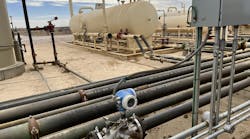The United States has a lot to learn from Cambodia”s Phnom Penh Water Supply Authority, according to a blog post by Jim Lauria, VP of marketing & business development for Amiad Filtration Systems, on The Huffington Post. In his post, Lauria explains how the underfunded utility dug the Cambodian capital”s water infrastructure out of the rubble of Pol Pot”s regime and now supplies fresh, clean water to Phnom Penh”s 1.3 million residents, rich and poor. He says delivery is reliable, rates are reasonable, and the efficiency of the system — a measure of how much water reaches its destination instead of leaking out of broken infrastructure — is an impressive 94.1 percent, with a goal of 96 percent by 2020. (In contrast, a 2002 report by the Congressional Budget Office estimated water loss to leakage in many U.S. drinking water delivery systems steals as much as 20 percent of the flow.)
The stunning success of the Phnom Penh Water Supply Authority”s efforts has earned them this year”s coveted Stockholm Industry Water Award, international recognition of its commitment and ingenuity.
According to Lauria, Los Angeles is responsible for more than 7,200 miles of pipe. New York City”s water and sewer departments alone are responsible for more than 6,500 miles of water mains and another 6,000 miles of sewer pipe — enough to build a tunnel from Penn Station to Phnom Penh and still have enough left over to dig from Grand Central to Los Angeles. Thousands more miles of pipe snake through the suburbs.
It”s not the city water departments” fault, notes Lauria. Thousands of miles of pipe — plus the pumping stations and other features that service it — is a lot to look after, especially on a shoestring budget. Our whole country”s water infrastructure is falling apart, and year after year, we as a nation pass up the opportunity to maintain or improve it. In fact, last year, the American Society of Civil Engineers awarded the U.S. drinking water infrastructure a D-minus.
To read Mr. Lauria”s full blog on Huffinton Post, click here.

